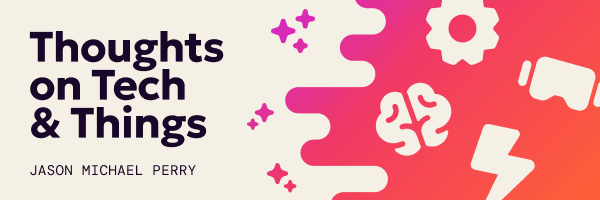Issue #10: Navigating a world of Dark UX💻

Hello, this week I’m in New York for Amazon Web Services’s (AWS) Summit, and I can’t wait for the sessions on AI services like SageMaker and Bedrock.
While searching for train tickets from Baltimore to New York, I found a headline that the FTC plans to sue Amazon for misleading its customers into subscribing to Amazon Prime and making it impossible to cancel. In my world, we refer to these design and copywriting tactics as dark UX patterns or deceptive design, an approach where we write content or build interfaces to push customers to a specific goal or to manipulate them into doing something they might not want. For those unfamiliar with the concept, picture canceling a cable subscription or trying to end a subscription for Sirius XM Radio. Obtaining these things may require divine intervention, or, even worse, spending countless hours talking with numerous individuals. Tactics like this have lived forever, and several companies, including Epic, LinkedIn, and Publishers Clearing House, have been caught or sued for using them. For this week’s newsletter, I will dig into just how these patterns are shaping our decision-making, but first, I have a few quick thoughts on tech and things:
👉 Over the weekend, Elon Musk hinted at a rebrand of Twitter, and Monday, x.com came alive. The Twitter mobile apps and many other assets still hold the old bird branding, but maybe we will see trickles of the new look and feel over the coming weeks. Musk’s leadership of Twitter has left a lot to desire, but maybe this is the start of an actual vision and thought out changes to the product core?
👉 Speaking of social, Threads traffic continues to crater after hitting 100M users in only five days. Threads is a minimal viable product (MVP) that is still missing features like Fediverse integration and pending direct messages, so maybe those future app updates will help reverse this dip.
👉 Apple’s rumored to build 500k Vision Pro devices, and Mark Gurman wonders if that’s enough for the Vision Pro’s App Store to have the same success as iOS or could this be a dud like the Apple Watch Store, Apple TV App Store, or the iMessage App Store? Will such a small audience be enough for developers to embrace the platform and make a profit?
👉 Oh, and guess what, developers! You can now apply to Apple for Vision Pro dev kits. They lock them down tighter than Fort Knox, so I doubt I can share much when we get one at Mindgrub, but I highly recommend you reach out if you need an assist porting an application or want to build something brand-spanking new.
👉 Who owns the data that feeds the training models for all these wonderful new AI systems? A consortium of publishers, including the New York Times and News Corp, plans to press for new AI legislation and potentially sue for using their data to train these systems. This comes days after many of the leading AI companies made a pinky promise to develop AI responsibly.
Now back to UX patterns ⬇️
You and I spend more time than we realize shaping the opinions of others and influencing their decisions. Parents read books that tell cautionary tales, offer late-night snacks as positive reinforcement for using the potty, or promise cash rewards for doing chores. Like all humans, our kids crave this positive reinforcement and need an occasional pat on the head to let them know that their decision is indeed one they should be proud of. Great marketers understand that this is not by accident and that these desires can drive many of our most significant decisions in adulthood. We are all wired to generate dopamine, an organic chemical that gives us a feeling or reward from physical activity or a sense of accomplishment from completing a task.
Businesses use psychology and an understanding of our dopamine receptors to prod us into doing what they want, and those methods range from white-hat tactics to truly dark-hat forms of UX coercion. White hat designers are the good guys and use tactics such as color and size to help direct a user’s eyes and attention to a desired target. Gray hat designers are a bit more indifferent, neither working for good nor bad, and as such may push harder on anti-user design patterns like de-emphasizing opt-out options by making them smaller or picking colors that deflect attention. A dark UX designer would consider transforming flows to hide or drastically limit access to options that are perceived negatively, like canceling an order or removing an item from a shopping cart, sometimes doing anti-user actions to coerce revenue or conversions.
The authors of the book Deceptive Patterns and their associated websites do an amazing job of walking through some of the most common tactics. All in all, about 16 of these tricks or tactics exist, and each desire to coerce you into doing something or performing some form of action. What makes them dark is when these efforts get you to do something you don’t mean or want to, like subscribing for an unexpected subscription or adding unneeded travel insurance to a trip.
What’s tricky is that some of the same patterns can be weaponized for good, and often each pattern has a white-hatted doppelgänger that hopes to promote healthier living or better attitudes. Take forced action, where a carrot is dangled to a user in exchange for offering information or doing a task. A common example is an online finance platform offering a higher saving rate if you share with a few friends. LinkedIn got in trouble for this same action, but what appeared to be connecting with a few folks in your contact list blasted those same contacts as you inviting them to join LinkedIn. At the same time, I appreciate the nagging notification from my Apple Watch to stand, or the forced action to complete my exercise ring with a short walk.

Each of us has a different level of patience for these patterns; some that I find innocuous may feel downright evil to you. The line is quite subjective, making it hard to tell when some of the most aggressive marketing strategies border on dark UX patterns vs. great business sense. For example, forcing urgency with legitimate information is a fair business practice, and it communicates a level of scarcity to a company’s inventory, regardless of how often people may purchase. Many companies strive to limit inventory to control pricing or create an artificial sense of demand, just like a numbered print, a limited shoe run, or OPEC and how it manages global oil supply.
What is new, is that some of these patterns have become web best practices and have moved from sly tricks to fairly standard fair. Take a moment and think about how you experienced the internet today (Go check out this link, I’ll wait until you come back).

Today the recommended web best practices are to present potential customers with content-hiding pop-ups that confirm shame them into subscribing to a newsletter, to obstruct access to contact information by directing users to knowledge, or to include ads or promoted content in a way that is hard to distinguish from other content. These tricks increase conversions, reduce call center costs, and juice revenue from ad buyers, and what suffers is the overall customer experience, but does that matter when everyone is doing it?
Ultimately, my biggest gripe with Dark UX patterns is the wording. UX is about user experience, and increasingly these tactics are not to the user’s benefit but their detriment. We could coin a new term like BX for business experience, but that feels too close to BS. What UX or BX patterns drive you batty?
-jason
p.s. Intentionally bad user interfaces are a great Reddit community filled with examples of some hilariously bad UX examples. Of course, Reddit is a mess these days, so for the foreseeable future, the entire community is dedicated to showing just how bad the native Reddit mobile app is. Luckily, you can check out the new community on the Fediverse and decentralized platform Lemmy.
Tesla Cybertruck or Ford F-150?

It looks like Tesla is trolling the world by wrapping its Cybertruck in a wrap that makes them look like a Ford F-150 on the road. This may explain the limited sightings of the delayed EV truck. Also, what’s going on in that frunk?
